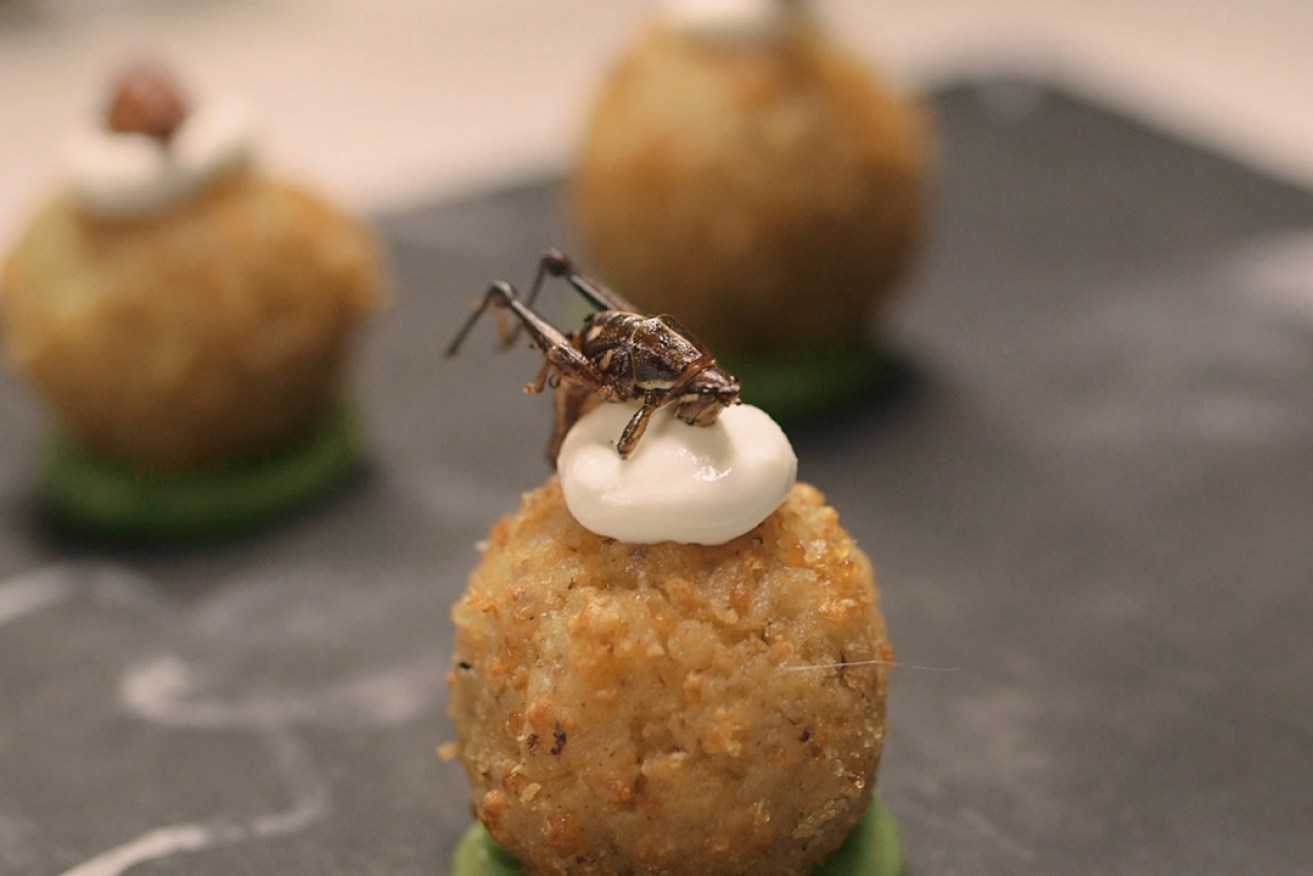The Gateway Bug: a film about the future of food
A new documentary suggests that convincing people to eat insects is less of a challenge than the logistical problems surrounding their production, writes Susan Lawler.

A still image from The Gateway Bug.
I’ve had the privilege of getting a sneak preview of a movie called The Gateway Bug, a documentary about feeding humanity in an uncertain age. It will be shown in Melbourne this weekend as part of the Melbourne Documentary Film Festival.
I wrote that eating insects is a good idea back in 2013, shortly after the Food and Agriculture Organization (FAO) released a report suggesting that using insects for food and feed would increase food security for our planet.
Following the publication of that article, I was contacted by people who wanted to know how to start farming insects. They were looking for people to contact, for information on regulations. I was invariably unhelpful. I didn’t know the answers, and felt inadequate, but now I know that nobody knew the answers back then. We were at the very beginning of a journey.
The Gateway Bug is a documentary about that journey, following the nascent industry in North America producing insects for human consumption.
Insects provide an alternative to our current food systems that use too much water, too much land, produce mountains of organic waste and create vast clouds of greenhouse gases.
Filmmakers Johanna B Kelly (director) and Cameron Marshad (cinematographer and editor) began making the film in 2015 at the first meeting of the American Edible Insect Coalition in Detroit. By interviewing 50 professionals in this new industry, they claim they can convert viewers into activists.
The film begins with a rush of frightening statistics about the dangers surrounding the future of food, made entertaining by the choice of music: “Pollution” by Tom Lehrer. Within the first 10 minutes the filmmakers have brought the audience up to speed on the problem with our food systems. They spend the next hour and a quarter listening to the people who are working on potential solutions and providing detail about the challenges they face.
Surprisingly, convincing people to understand the potential health benefits and to like the taste of insects does not seem to be one of those challenges.
There are no signs of disgust on the faces of people eating insects for the first time, who say they taste like chips or popcorn. A protein powder made from crickets is said to be “nutty with a hint of shrimp”.
When crickets were offered as a topping on gourmet hot dogs in Youngstown Ohio, the restaurant struggled to keep up with demand.
No, the challenges were logistic rather than ideological. Cricket farms must find feed that does not compromise the taste of their product. Grinding the grain to a powder fine enough for baby crickets and caring for thousands of charges at a time is labour-intensive. Sadly, one business goes under when millions of crickets die off due to contaminated town water.
This film makes you sit down and think seriously about where our food comes from and where it will come from in a more crowded future earth
What I found deeply surprising was the diversity of viewpoints of the people involved. One California business, which started by growing crickets on spent mash from a nearby brewery, gave up when it became apparent that their product could not be used as fish feed in the aquaculture industry.
Tyler Isaac, co-founder of Slightly Nutty, closed his business in 2016 because, “..we did not want to feed rich millennials cricket powder”. For him, the main problem is the unsustainable food system and unless he was changing that, he did not feel like he was making a difference.
Other companies are all about finding ways to get Americans to eat crickets: as protein bars (eXo), in chocolate bars (Chapul), or as chips quaintly renamed Chirps (Six foods). Also concerned about climate change, the lack of water resources, and food systems, the people who run these companies are nevertheless content to use their products as a gateway to using bugs in everyday foods.
I love the way the filmmakers used old footage to express certain attitudes toward food and insects. It cleverly sent the message that although the words sounded perfectly reasonable, these ideas are already part of our past. The graphics are simple and useful, expressing concepts in a way the viewer doesn’t have to work too hard to understand.
The Gateway Bug is really a discussion of food and how critical it is to our future on this planet. That may sound somewhat trite, but this film makes you sit down and think seriously about where our food comes from and where it will come from in a more crowded future earth.
Before seeing this movie, I didn’t even know that “entomophagist” was a word, but as an advocate of entomophagy, I suppose I am one. I was surprised and moved by this documentary, which did not pull any punches but also did not preach or condescend. But beware, after watching it, you are probably going to want to eat some bugs.
Susan Lawler is Associate Professor, Department of Ecology, Environment and Evolution, La Trobe University. This article was originally published on The Conversation.
The Gateway Bug filmmakers are hoping to screen the documentary more widely in Australia, and say it might be shown in SA this September. Find out more about film here.




